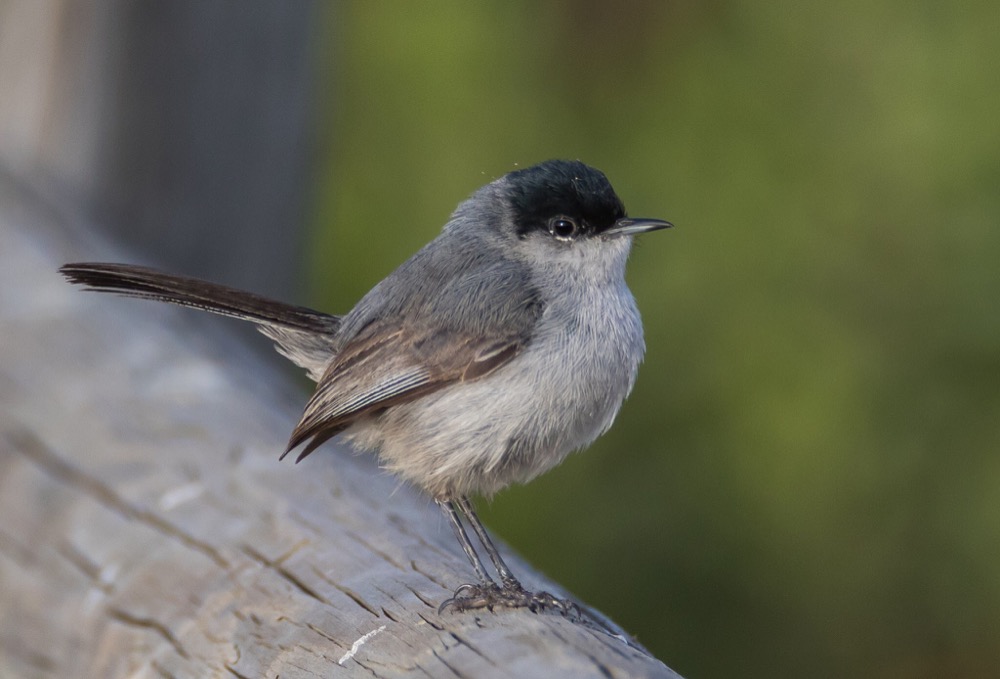Male California Gnatcatcher showing black cap (photo credit: chezasaurus at iNaturalist.org)
Did you know that Jeffries Ranch is home to the rare coastal California gnatcatcher? That’s right, this small songbird lives within the Jeffries Ranch conservation area.
This year-round resident relies almost exclusively on the coastal sage scrub plant community for its survival. The coastal sage scrub plant community is characterized by low growing shrubs that include California sagebrush and California buckwheat.
How to Spot This Rare Bird
Not easily seen, the coastal California gnatcatcher is a grayish blue bird with a mostly black tail and a distinctive white eye-ring. Male gnatcatchers sport a black cap although it is absent during the winter months.
Adult coastal California gnatcatchers measure only 4.5 inches and weigh just 0.2 oz. These shy, elusive birds flit through the low growing shrubs feeding on various insects and are not often seen. However, if you listen closely, you may be able to hear their distinctive kitten-like call or “meew, meew.”
A Delicate Dance of Raising Young in Sage Scrub
The coastal California gnatcatcher breeding season occurs in late February through August with peak nesting occurring in mid-March to mid-May. Cup shaped nests are constructed in the sage scrub about 1-3 feet above the ground. Nests are vulnerable to predators as well as human disturbance.
The average number of eggs laid is 4. It takes up to 14 days for the eggs to hatch and another 8-13 days before the young “fledge” from the nest. Juvenile birds are dependent upon their parents for up to several months following departure from the nest before they disperse to establish their own territories. Adults often remain together in pairs throughout the year on territories they actively defend especially during the breeding season.

Protecting the Coastal California Gnatcatcher and Its Shrinking Home
The coastal California gnatcatcher was once considered locally common but by the 1990s, the loss, fragmentation, and degradation of coastal sage scrub habitat from urbanization left this tiny bird at risk of extinction. The coastal California gnatcatcher is listed as a Threatened species by the U.S. Fish and Wildlife Service and is considered a Bird Species of Special Concern by the State of California.
A Call to Coexist: What Can You Do
Protecting the coastal California gnatcatcher isn’t just about saving a bird. It’s about preserving the wild heartbeat of Jeffries Ranch. Here’s how you can help this tiny neighbor thrive:
- Tread lightly in its habitat and stay on trails to avoid crushing fragile nests
- Spread the word about this rare songbird’s story!
Together, we can ensure the gnatcatcher’s delicate “meew” continues to echo through the sage scrub for generations.


Leave a Reply